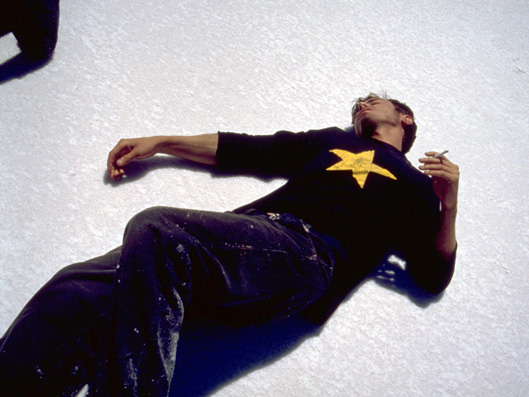Week 18/2023
Featuring a selection of landscape films that are haunted by death, resilience and resurrection, this week’s selection is a testimony to the power of landscape.
Together with Courtisane, Art Cinema OFFoff pays tribute to the recently deceased Jean-Marie Straub by presenting a triple bill that includes Straub’s first solo film, Le genou d’Artemide (2008). After the death of his partner Danièle Huillet in 2006, Straub continued to make more than twenty short films. They were described by Claudia Plummer as “mourning-works, acutely indebted to Huillet’s past presence and present absence.” On May 1, the date of her birth, two of these films will be shown on new 35mm prints with English subtitles.
This Is Not a Burial, It’s a Resurrection (2009) was shot in Lesotho, South Africa, where Mary Twala Mhlongo plays an 80-year-old widow who’s busy preparing for her own funeral after the loss of her last remaining relative until she takes up the resistance to the construction of a dam that would wipe her community and ancestral burial ground off the map. Sadly, the leading actress passed away herself shortly after finishing this film.
Travelling across three valleys and continents, from Lesotho’s Valley of Tears (Phula ea Meokho) to behind the mythical slopes of Etna in Straub-Huillet’s Schwarze Sünde, we continue onwards to cross the Americas in Gus Van Sant’s Gerry (2002). In this first part of his Death Trilogy, we get lost on a hike through Death Valley. A work of creative geography across the California desert, Argentina, and parts of Utah’s Salt Flats, Gerry will be screened in open air at De Koer in Ghent with a new live soundtrack by Ananta Roosens on violin and Mostafa Taleb on a Persian bowed string instrument called the kamancheh.


